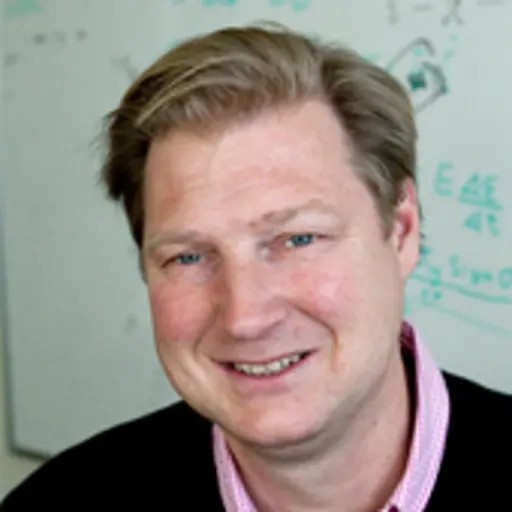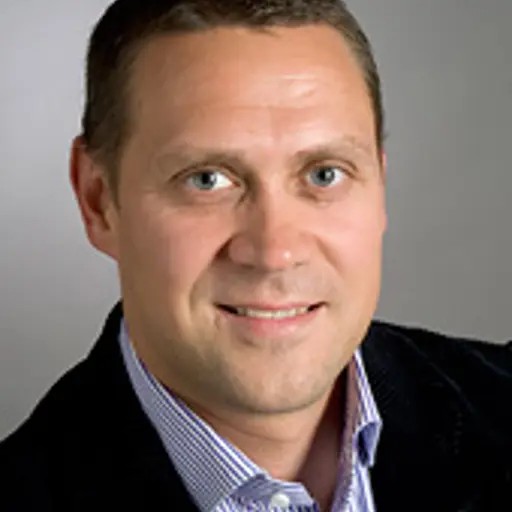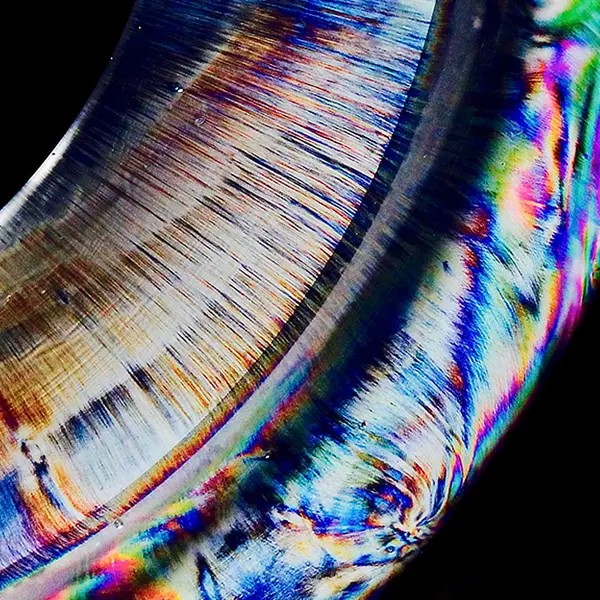
What can we learn from nature when creating the materials of the future? That question takes centre stage as researchers from around the world gather at Chalmers University of Technology on 13–14 November for this year’s Materials for Tomorrow conference, themed Bioinspired Materials – an event where nature’s smart solutions inspire the next generation of technology and innovation.

Photographer: Marcus Folino
A Programme Full of Inspiration
The conference programme is packed with highlights. Professor Michael Mayer draws inspiration from electric fish to design future energy solutions. Professor Sarah Heilshorn develops tailor-made biomaterials that mimic the body’s own tissues – tools that help scientists understand how cells behave in disease and how new therapies can be developed. Associate Professor Eleni Stavrinidou explores how plants and electronics can merge into living, photosynthetic materials, where nature itself becomes part of the technology. Professor Henrik Birkedal delves into the mystery of the narwhal’s tusk, where nature’s elegance meets advanced materials science – a biomineral that could inspire the development of next-generation materials.
▶ Read more about all the speakers at this year’s conference
“This year’s theme highlights both imagination and creativity,” says Leif Asp, Professor in Lightweight Composite Materials and Structures, and Director of the Area of Advance Materials Science at Chalmers.
“Multifunctional material solutions can reduce weight, improve energy efficiency in transport, and enable more sustainable systems. Inspiration from nature is central to developing the materials of the future.”
A Meeting Place for the Materials Community
Materials for Tomorrow is Chalmers’ major annual meeting place for materials research. “Researchers from Chalmers, other universities, industry, and government agencies come together here.
With world-leading researchers on site, participants gain a unique insight into global trends in bioinspired materials science – and the chance to spark new ideas and collaborations,” says Leif Asp.
The programme offers top-level content and is free of charge, but registration is required no later than 25 October. [Register here ➜]
Bioinspiration for a Sustainable Future
What role might bioinspired materials play in the technologies and societies of the future?
“I think we will need to do more with less – to be more resource-efficient, simply put. Use less material, less energy, create less waste. Nature is phenomenal at producing materials with diverse properties – at room temperature, with low energy consumption and almost no waste,” says Leif Asp, highlighting the field’s relevance for the green transition.
Societal Challenges and Opportunities
Which societal challenges does this research area address?
“Practically all of them,” says Leif Asp. “In transport, bioinspired structural energy-storage materials could lead to lighter vehicles and aircraft that consume less energy. Materials that can change shape or function also offer greater product flexibility – in the future, perhaps we won’t need separate products for separate purposes, but rather one that adapts to the task.”
Nature as a Teacher What makes nature’s solutions so ingenious in a high-tech society?
“I’m fascinated by how nature creates materials that perform multiple functions simultaneously. Just look at how it produces both stiff, impact-resistant materials and soft, elastic structures with practically to same feedstock and at low temperature,” says Leif Asp.
Is there anything else you’d like to add? “
Yes! We encourage all Chalmers PhD students and postdocs to take part in our photo competition and ▶ poster session. The photos contribute to the visual identity of Chalmers’ Area of Advance Materials Science– and winners receive travel grants to visit an international research lab.
The poster competition offers the same top prize, while the runners-up receive support to attend international conferences.”

From Burrs to Sharks and Geckos
Bioinspiration is already around us – in many products we use every day:
- Velcro – inspired by burrs that cling to animal fur.
- Self-cleaning surfaces – mimicking lotus leaves that repel water and dirt.
- Synthetic spider silk – as strong and elastic as nature’s own web.
- Sharkskin-inspired coatings – reducing drag and resisting bacteria, used on ship hulls and hospital surfaces.
- Gecko-inspired adhesives – attach without glue, used in reusable tapes and robotics.
- Structural colours – like those of butterflies and beetles; colour without pigment, for textiles and security printing.
- Bioinspired robotics – robots that move like fish or birds, efficient in air and water.

Photographer: Chalmers
Perspectives from the Materials for Tomorrow Organisers
Ahead of this year’s conference, members of the organising committee share their perspectives on bioinspired materials, the opportunities they see for the field – and what participants can expect from Materials for Tomorrow 2025.
Anna Ström Professor at Applied Chemistry and Co-director of the Area of Advance Materials Science at Chalmers University of Technology.
Why should people attend Materials for Tomorrow, and what do you hope they will take away from the conference?
“The conference brings together outstanding speakers who highlight the wide scope of research in bioinspired materials – from biological processes to how nature builds complex structures. The invited speakers come from Sweden, from Chalmers, and from all over the world. The event is open to everyone and offers a unique opportunity, over two days on the Johanneberg campus, to listen to a selection of some of the world’s leading researchers in this field."
"I believe both the audience and the speakers will be inspired by the range – from applications to fundamental science – and I hope participants leave with new perspectives on their own research and renewed enthusiasm for their work. And don’t miss the poster exhibition! It’s a great opportunity for researchers, students, and the general public to engage in discussions and ask questions about ongoing research.”

Photographer: Mats Hulander
Martin Andersson, Professor of Materials Chemistry at Chalmers University of Technology, focusing on applying nanomaterials and surface chemistry.
What potential do you see for bioinspired materials in medicine and health?
“Bioinspired materials are a key driving force in the development of next-generation medical technologies. By emulating nature’s principles for creating hierarchical, functional, and adaptive structures, we can develop materials that not only exhibit high biocompatibility but also actively interact with biological systems. Such materials can detect and respond to physiological signals, modulate healing and tissue integration, and thus enable life-long implants, infection-resistant medical devices, and smart systems that continuously monitor the body’s condition to promote healthier lives.”

Anders Palmquist, Professor and head of the Department of Biomaterials at the Institute of Clinical Sciences, Sahlgrenska Academy, Gothenburg University.
How do you see bioinspired materials helping to bridge medicine and technology?
“I see the conference as an excellent opportunity for collaboration. We face major challenges and opportunities – an ageing population that wishes to stay active and independent, widespread diseases such as diabetes and osteoporosis that impair healing, and the growing threat of antibiotic resistance. Nature already provides many of the solutions;
we just need to be observant and open to new interdisciplinary collaborations. In biomaterials science, our goal is to continuously improve treatment options for patients. Traditionally, standard materials were used that were not tailored to the individual. Today, new fabrication techniques are emerging where bioinspiration plays a key role – allowing us to design biomaterials customised for each patient. Evolution has perfected ways to optimise structure, weight, durability, and surface properties – and now we can replicate parts of these processes to enhance healing, ensure long-term function, and reduce infection risks.”
- Full Professor, Material and Computational Mechanics, Industrial and Materials Science
- Head of Unit, Applied Chemistry, Chemistry and Chemical Engineering
- Head of Unit, Applied Chemistry, Chemistry and Chemical Engineering





